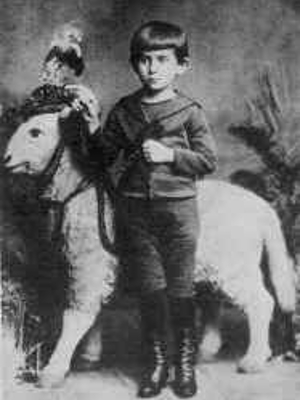The series Franz Kafkaʼs Prague corresponds to the conception of a specialized guiding tour through Prague City. In the following weeks we will present certain buildings or monuments, explain their connection to Franz Kafkaʼs life and work and give further background information to the time-context or the history of the place. Readers may be motivated to visit the described locations and to discover a special view on the Golden City, which Kafka once called “a mother with claws”.
3nd stop: Palác Kinských (The Kinský Palace)
Staroměststké náměstí 12
The Kinský Palace or Goltz Kinský Palace is a typical example of Prague’s baroque architecture. It was built between 1755 and 1765 in the place of two former medieval houses by the famous architects Kilian Ignaz Dientzenhofer and his son-in-law Anselmo Lurago. To the Kafka family the Palace is connected twice in different periods.
From 1893 to 1901 Franz Kafka attended the secondary school at the rear part of the building in the back yard. In the beginning Kafka was a good pupil, later on an average student. He had a certain talent for languages (German, Latin, Greek), but problems with mathematics. His interest in geography was extraordinary. Towards the end of his schooling we can recognize a growing attachment to German literature; for example he chose subjects from this field for his faculty essays at the end of the school year. Throughout his life he had to fight against a feeling of inferiority that effectively was not actually real. On the other hand – according to Hugo Hecht, a school contemporary – Kafka took part in a collective betrayal when a group of pupils persuaded a maid of their teacher of Greek to steal the exam questions for the final exam. At secondary school Kafka also began to reflect on existential questions and political concepts such as communism or Zionism. It is said that sometimes Franz wore a red carnation, a symbol of socialist thinking, hidden in his button hole.
The second connection between the building and the Kafka family affects Herman Kafkaʼs business in fashion accessories. With this he started in the 1880s and his trading activity was growing continously in the following decades. Finally he was engaged in the minor dealing and the wholesale as well. Among his employees we find trading agents for the business in town and in the countryside. The Kinský Palace was his last business address (right corner of the building). Here he presented his merchandise in luxurious show windows and shelves between 1912 and 1918. Afterwards he sold his shop to relatives of his wife, who carried out their business for some more years under his name. This last fact and the address itself may give us a notion of Hermanʼs success as a merchant. – On the contrary, less successful was the attempt of the family to run an asbestos factory in the 1910s in Prague Žižkov. After a good start the business went from worse to worse. By the way, one reason for this negative development was the unreliability of Franz.
After World War II the Kinský family was dispossessed and lost the Palace among other holdings. On 25th February 1948 Klement Gottwald, the general secretary of the communist party, announced from the balcony of this building the definitive coming into power of the communists in Czechoslovakia.
published: 14. 12. 2014







